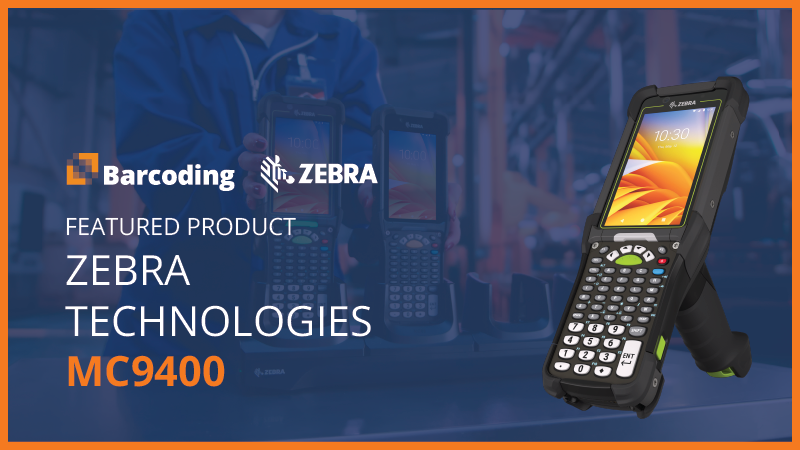For producers, manufacturers, distributors, and retailers of many foods, flowers, pharmaceuticals, and other perishable products, time is of the utmost importance. But it’s not the only concern.
A typical perishable supply chain is a complex, interconnected, interdependent system of systems that generates complex data associated with locations, environmental conditions, physical forces, transformation events, and expiration dates.
Many perishables are also heavily regulated, which can further complicate product tracking, traceability, and reporting requirements. And when it comes to protecting products and consumers, the margin of error is virtually nil.
Perishable supply chains present unique inventory management and data capture challenges. But with advanced technologies and solutions in place, protecting quality and documenting each step of a perishable product’s supply chain journey can be streamlined, even automated, and transparent.
In this article, we’ll outline key supply chain data capture and management solutions that can strengthen your perishable supply chain management (PSCM) and make it more efficient, reliable, and sustainable.
The Power of Item-Level Serialization in PSCM
Assigning a unique identifier to every single unit of product creates a distinct supply chain data point, which enables unique units to be traced along the chain with real-time reporting of events and associated data. Should a product be recalled, companies can quickly and accurately locate, identify, and remove affected units—and only those units affected by the recall.
This item-level tracking capability supports consumer safety while also minimizing waste and reducing the costs of recalls, in terms of both revenue and brand trust. It also enables tracking of ingredient origins at the batch & lot level.
Serialization also makes it easier to manage inventory for freshness and expiration dates. When distributors and retailers know exactly where every product unit is and when it expires, they can more effectively manage stock to ensure that the first products to expire are the first products out/sold (FEFO), limit markdowns, reduce waste, and deliver fresh products to their customers.
In the case of pharmaceuticals and other closely monitored industries, serialization can help authenticate items to prevent counterfeit products from entering the supply chain. In the food industry, it enables tracking of ingredient origin for quick issue identification and resolution.
Automating Data Capture With RFID
Radio frequency identification (RFID) is a particularly powerful tool for automating perishable supply chain data capture. Unlike barcodes, RFID tags don’t require line-of-sight for scanning and can be read from a longer distance. They can hold more data than one-dimensional (1D) barcodes, too, which means RFID tags can be encoded with product information such as origin, expiration date, handling instructions, and other important details.
Together with RFID readers and software solutions designed to manage the data, RFID tags enable automated data capture that’s faster and less subject to human error than manually collected and recorded data would be. RAIN RFID not only makes it possible to accurately track products along the supply chain and trace them back to their origins, but it also makes tasks like receiving, picking, packing, and shipping more accurate and efficient, too.
IoT-Enabled Sensors & Smart Equipment
Internet-of-Things-enabled sensors and smart storage and transport equipment have the potential to transform the management of perishable goods in the supply chain. Whether on their own or integrated into, for example, refrigerated storage units, sensors can continuously monitor environmental conditions including temperature, humidity, and light exposure.
The devices generate real-time data and can trigger alarms for corrective action if parameters exceed specifications. Warnings can alert operators to address fluctuations that could degrade or destroy products—and data management solutions enable the related data to be collected and stored for recordkeeping.
Over time, data collected from IoT devices can be used for predictive analytics to help companies identify and address supply chain vulnerabilities, to mitigate risk before issues occur.
Data Capture Supports Sustainability
A resilient supply chain is also a sustainable one. Item-level awareness of expirations and best-by dates can significantly reduce waste. Accurate, detailed information about each item’s shelf life and location streamlines and simplifies first-expiry-first-out (FEFO) inventory management to ensure the oldest items are sold or used before they have a chance to expire or spoil.
Advanced tracking technologies are also used to monitor reusable transport containers. This can help prevent loss and theft of durable transport items like totes, bins and racks, optimizing reusables’ return on investment and helping avoid single-use transport materials.
IoT-enabled sensors that monitor refrigerated truck temperatures can even help reduce fuel consumption in transportation.
Proper Integration is Key to Success
Connected inventory management solutions that improve supply chain visibility also help enable data-driven business decisions. They provide real-time information on inventory levels, demand patterns, and other key metrics for inventory level optimization, waste reduction, and continuous improvement in operations.
Optimizing perishable supply chain management can lead to benefits beyond cost savings and efficiency. Quality and sustainability improvements can strengthen brand trust, and a more resilient supply chain is also a competitive advantage. That’s why it’s so important to partner with a team of experts, like our Barcoding supply chain geeks, when implementing complex technologies and systems.
Learn more about the ways RFID is transforming supply chains everywhere, from end to end. Click here or below to download our free guide.






